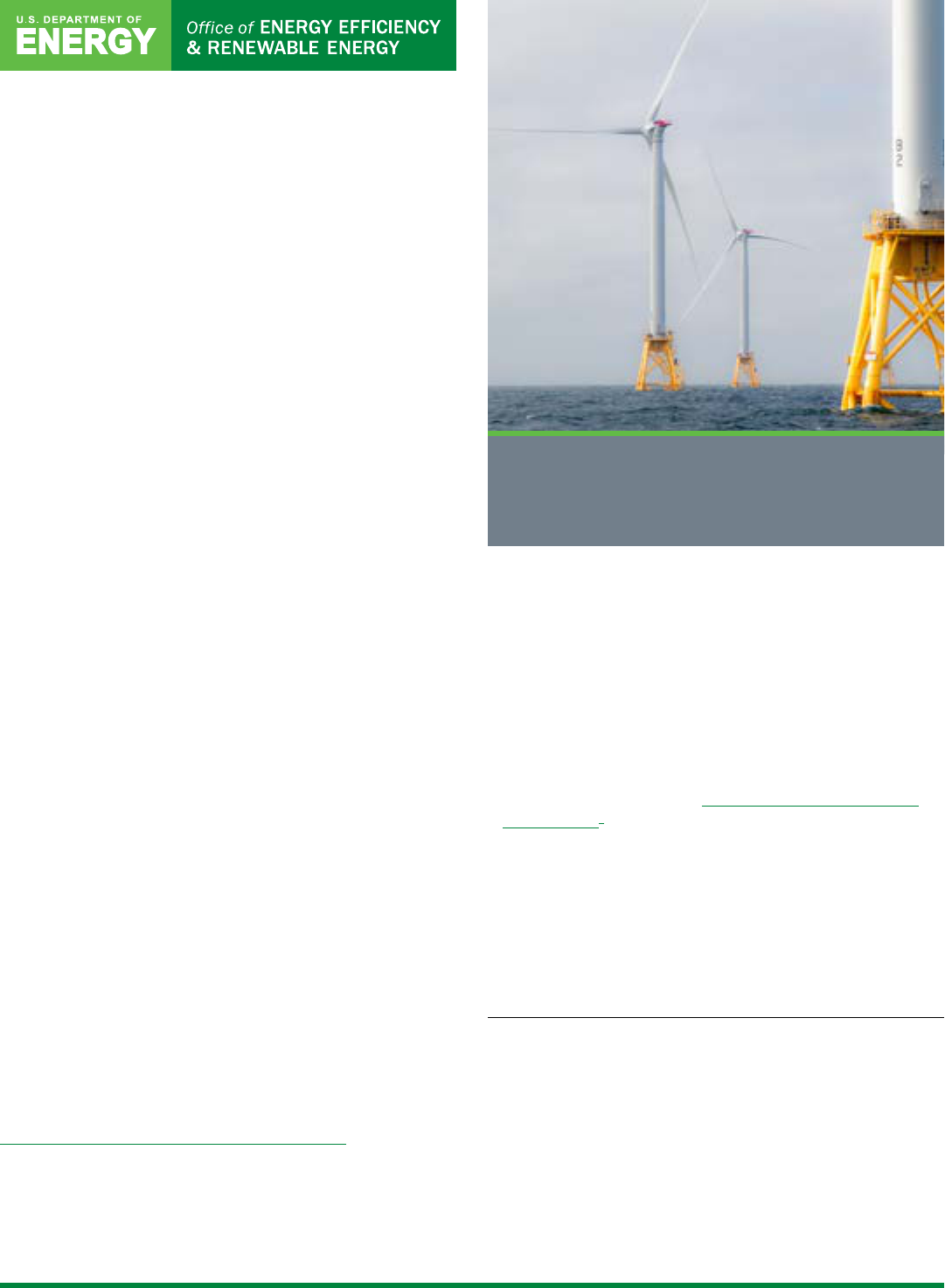
The Block Island Wind Farm, the rst U.S. offshore wind farm,
represents the launch of an industry that has the potential
to contribute signicantly to a reliable, stable, and affordable
energy mix.
Photo by Dennis Schroeder, NREL 41193
Advancing the Growth of the
U.S. Wind Industry: Federal
Incentives, Funding, and
Partnership Opportunities
Wind power is a burgeoning power source in the U.S.
electricity portfolio, supplying more than 10% of U.S.
electricity generation.
The U.S. Department of Energy’s (DOE’s) Wind
Energy Technologies Ofce (WETO) focuses on
enabling industry growth and U.S. competitiveness by
supporting early-stage research on technologies that
enhance energy affordability, reliability, and resilience
and strengthen U.S. energy security, economic growth,
and environmental quality. Outlined below are the
primary federal incentives for developing and investing
in wind power, resources for funding wind power, and
opportunities to partner with DOE and other federal
agencies on efforts to move the U.S. wind energy
industry forward.
Incentives for Project Developers and Investors
To stimulate the deployment of renewable energy technologies,
including wind energy, the federal government provides
incentives for private investment, including tax credits and
nancing mechanisms such as tax-exempt bonds, loan guarantee
programs, and low-interest loans.
Tax Credits
The Ination Reduction Act (IRA), which became law on
August 16, 2022, extends and increases tax credits for wind
energy projects that begin construction prior to January 1, 2025.
Starting in 2025, the IRA converts energy tax credits into
emissions-based, technology-neutral tax credits available to
all types of power facilities with zero or net-negative carbon
emissions. The IRA begins phasing out either in 2032 or when
total greenhouse gas emissions in the power sector decline to at
least 75% below 2022 levels—whichever comes last.
To receive the increased credit amount, projects that began
construction on or after January 29, 2023 must satisfy
apprenticeship and prevailing wage requirements. A full
exception to this applies to small facilities, which must either
meet the prevailing wage and apprenticeship requirements
or have a maximum net output of less than 1 megawatt to
receive the increased credit amount. The base credit amount
for large projects that do not meet the wage and apprenticeship
requirements is 20% of the full credit amount.
Additionally, under the IRA, projects can receive stackable bonus
credits for any or all of the following:
• 10% for meeting domestic manufacturing thresholds of 100%
domestic steel or iron and 40% domestically-manufactured
components for land-based wind or 20% domestically-
manufactured components for offshore wind
1
• 10% for locating facilities in fossil-fuel-powered communities or
browneld sites
2
• 10% for locating projects less than 5 megawatts in low-income
communities or on tribal lands, or 20% for a low-income
residential building or economic benet project.
3
Finally, for some projects, the IRA allows entities to transfer
credits to another taxpayer and authorizes direct payments for
tax-exempt entities such as nonprot organizations, electric
cooperatives, and tribes.
1 Through 2024. Domestically-manufactured component requirements grow to 55% in
2027 for land-based wind and in 2028 for offshore wind.
2 https://www.irs.gov/pub/irs-drop/n-23-29.pdf
3 For facilities under 5 MW, 1.8 gigawatts per year of additional allocated environmental
justice bonus credits are available for:
• Locating facilities in low-income communities (10 percentage points)
• Locating facilities on tribal lands (10 percentage points)
• Locating facilities as part of a low-income residential building project (20 percentage
points)
• Locating facilities as part of a low-income economic benet project (20 percentage
points).
The environmental justice bonus credits are stackable with the other domestic content
and energy community bonuses noted above but are not stackable with each other.
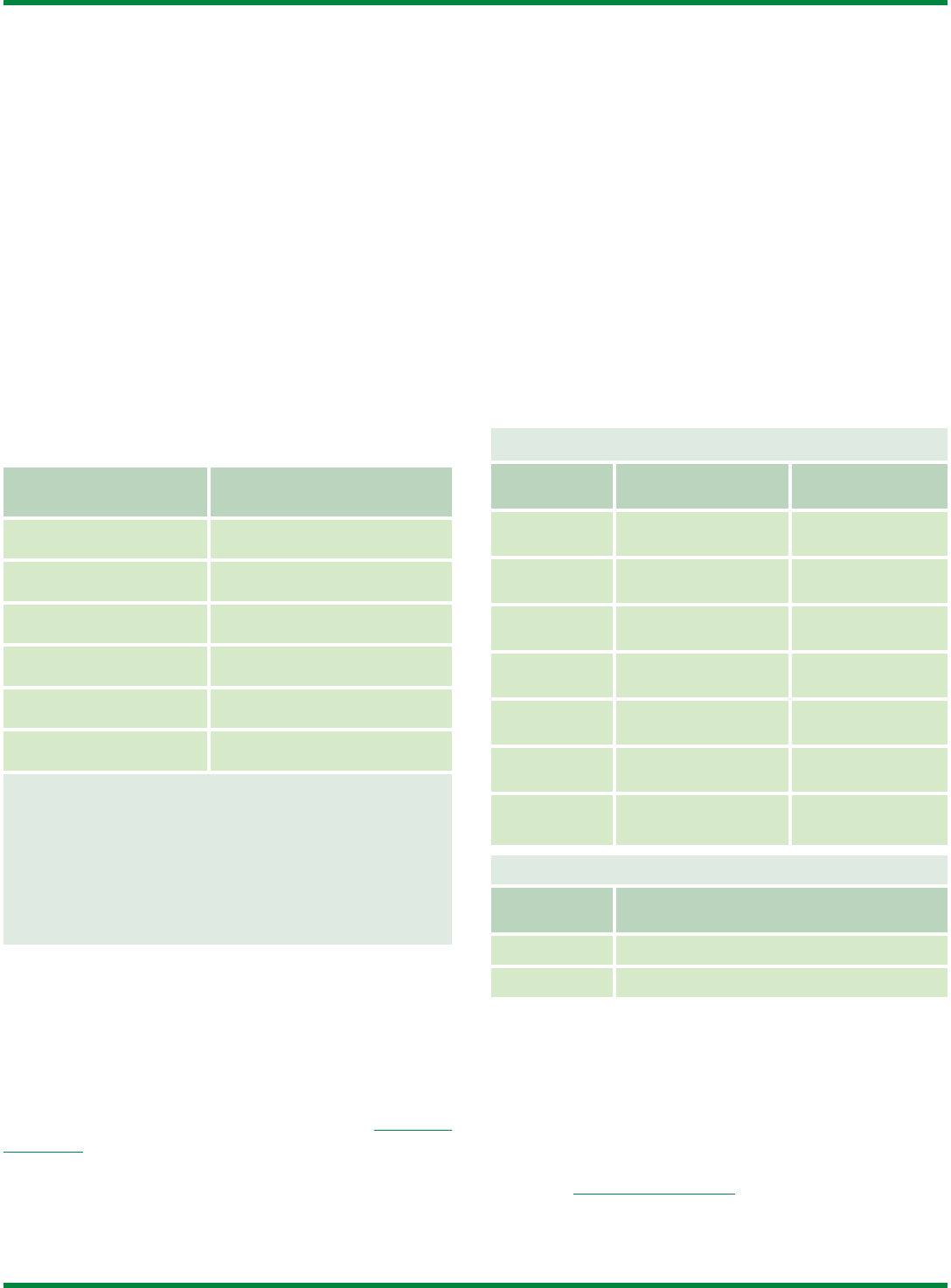
Renewable Electricity Production Tax Credit (PTC)—The
PTC allows owners and developers of wind energy facilities
(land based and offshore) to claim a federal income tax credit on
every kilowatt-hour (kWh) of electricity supplied to the power
grid annually for a period of 10 years after a facility is placed
into service.
The IRA extends through 2024 the PTC, which previously
expired for wind at the end of 2021. Wind projects placed in
service after 2024 are eligible for a technology-neutral clean
energy PTC of the same value.
Utility-scale wind projects placed into service after Dec. 31,
2021, that satisfy the new wage and apprenticeship requirements
will receive an ination-adjusted credit of 2.6 cents per kWh for
the rst 10 years of electricity generation.
Projects placed into service on or before Dec. 31, 2021, remain
Construction Start Date
The estimated allowable
tax credit is…
After Dec. 31, 2016
1.9 cents/kWh
By Dec. 31, 2017
1.8 cents/kWh
By Dec. 31, 2018
1.4 cents/kWh
By Dec. 31, 2019
1 cent/kWh
By Dec. 31, 2021
1.5 cents/kWh
By Dec. 31, 2024
2.6 cents/kWh*
*Projects >1 megawatt that began construction on or after Jan. 29, 2023 must meet
apprenticeship and prevailing wage requirements to receive the full allowable credit
amount. For large projects that do not meet apprenticeship and prevailing wage
requirements, the allowable tax credit is 20% of the full value (e.g. 0.52 cents/kWh for
projects that begin construction by 2024). Values may be adjusted for ination in future
years. Additionally, the IRA adds 10% bonus credits for meeting domestic manufacturing
thresholds and for locating facilities in fossil-fuel-powered communities, low-income
communities, or on Tribal lands.
After commencing construction by the deadlines noted in the table, projects have four
years to begin producing electricity.
subject to the prior PTC phase-out.
Starting in 2025, the IRA converts energy tax credits into
emissions-based, technology-neutral tax credits.
Additionally, the IRA adds stackable 10% increases in the PTC
value for projects placed in service after Dec. 31, 2022, that meet
domestic manufacturing thresholds or site facilities in fossil energy
communities
, low-income communities, or on tribal lands.
programs.dsireusa.org/system/program/detail/734
Business Energy Investment Tax Credit (ITC)—The ITC is
a federal income tax credit for capital investments in renewable
energy projects. Unlike the PTC, this one-time credit is based
on the dollar amount of the investment and earned when the
equipment is placed into service. Owners and developers of large
land-based wind energy facilities that break ground (or, in the
case of developers, commence construction) can elect to claim
the ITC instead of the PTC; however, the value of the credit
depends on when the facility starts construction.
For large projects, the IRA sets the ITC at 6% or 30% of the
cost of installed equipment, depending on project size and
labor factors; projects over 1 megawatt must satisfy new
apprenticeship and prevailing wage requirements to receive the
30% ITC. For small wind projects (turbines up to 100 kilowatts)
that began construction after 2019 and were placed into service
For land-based wind
If construction
begins by…
The credit for large
wind turbines is…
The credit for small
wind turbines is…
Dec. 31, 2018
18% of expenditures
30% of
expenditures
Dec. 31, 2019
12% of expenditures
30% of
expenditures
Dec. 31, 2020
18% of expenditures
26% of
expenditures
Dec. 31, 2021
18% of expenditures
26% of
expenditures
Dec. 31, 2022
6% or 30% of
expenditures
30% of
expenditures
Dec. 31, 2023
6% or 30% of
expenditures
30% of
expenditures
Dec. 31, 2024
6% or 30% of
expenditures
30% of
expenditures
For offshore wind
If construction
begins by…
The credit for offshore wind turbines is…
Dec. 31, 2022
30% of expenditures
Dec. 31, 2024
6% or 30% of expenditures
by December 31, 2021, the ITC is 26%.
Starting in 2025, the IRA converts energy tax credits into
emissions-based, technology-neutral tax credits.
Additionally, the IRA adds stackable bonus credits of ten
percentage points for projects placed in service after Dec. 31,
2022, that meet domestic manufacturing thresholds or site
facilities in fossil energy communities, low-income communities, or
on tribal lands.
programs.dsireusa.org/system/program/detail/658
2

Advanced Manufacturing Production Tax Credit—
The IRA also creates new advanced manufacturing production
credits for companies that domestically manufacture and sell
clean energy equipment in the United States between December
31, 2022, and December 31, 2032.
For wind turbine components, the amount of the credit varies
depending on the component type and is multiplied by the rated
capacity of the turbine (in watts).
- Blades: 2 cents times rated capacity
- Nacelle: 5 cents times rated capacity
- Tower: 3 cents times rated capacity
- Fixed-bottom offshore wind platform: 2 cents
times rated capacity
- Floating offshore wind platform: 4 cents
times rated capacity
- Distributed wind inverters: 11 cents times rated capacity.
• For critical minerals, the credit is 10% of the cost incurred to
produce the mineral.
• For offshore wind vessels, the credit is 10% of the vessel’s sale
price.
Beginning in 2030, the advanced manufacturing production
credit will be reduced by 25% each year and eliminated for
components sold after 2032.
Advanced Manufacturing Investment Tax Credit—The
IRA reestablishes the Advanced Manufacturing Tax Credit
(commonly referred to as 48C), which supports investment
in domestic clean energy manufacturing facilities through a
competitively awarded 30% investment tax credit. Qualied
facilities include property designed to produce or recycle wind
energy components, including both facilities and major tooling.
The IRA provides for $10 billion to be competitively awarded
for these projects, with at least $4 billion awarded to investments
in energy communities. Facilities that begin construction by Dec.
31, 2024 can choose either the Advanced Manufacturing PTC or
Advanced Manufacturing ITC.
Residential Renewable Energy Tax Credit—Taxpayers
who purchase and install a qualifying residential small wind
electric system (100 kilowatts or less) may claim the Residential
Renewable Energy Tax Credit for qualied expenditures on
systems placed into service on or before Dec. 31, 2034. The
law provides for a phase-down of this credit, as outlined
below. Qualied expenditures include labor costs for on-site
preparation, assembly, or original system installation, and for
piping or wiring to interconnect a system to the home. The credit
applies to existing homes, newly constructed homes, principal
residences, and second homes but not rental properties. There is
no maximum credit.
programs.dsireusa.org/system/program/detail/1235
New Markets Tax Credit (NMTC)—The NMTC Program
incentivizes community development, job creation, and
economic growth by attracting private investment to underserved
communities. The program allows individual and corporate
taxpayers to receive federal income tax credits in exchange for
making equity investments in vehicles certied as Community
Development Entities (CDEs) by the Treasury Department’s
Community Development Financial Institutions Fund. CDEs
that receive tax credit allocation authority under the program
are domestic corporations or partnerships that provide loans,
investments, or nancial counseling in low-income urban and
rural communities. An investor in a CDE will benet from a tax
credit equal to 39% of their original investment over a 7-year
period, in addition to the returns on the investment. The CDEs,
in turn, use the capital raised to provide exible, affordable
nancing for environmentally sustainable projects in low-income
communities. The NMTC Program has helped support
renewable energy projects, including the Coastal Energy Project,
a 6-megawatt wind farm in Grayland, Washington.
cdfund.gov/programs-training/programs/
new-markets-tax-credit
For residential wind
If system is placed
in service…
The estimated allowable tax
credit is…
By Dec. 31, 2019
30% of qualied expenditures
In 2020 or 2021
26% of qualied expenditures
In 2022–2032
30% of qualied expenditures
In 2033
26% of qualied expenditures
In 2034
22% of qualied expenditures
Future years
N/A
3
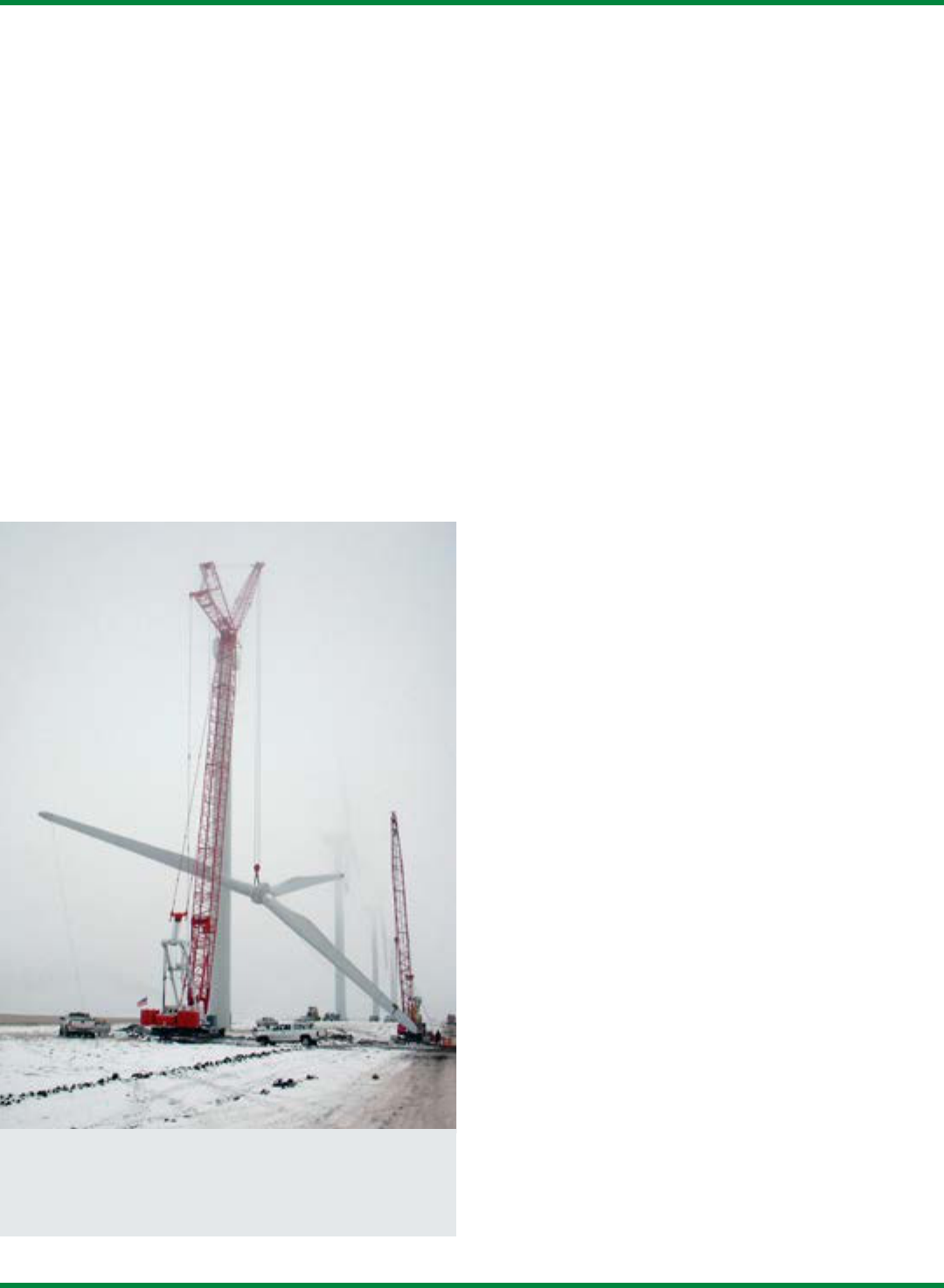
Financing Mechanisms
Rural Energy for America Program (REAP) Renewable
Energy Systems & Energy Efciency Improvement Loans &
Grants—Through REAP, the U.S. Department of Agriculture
provides agricultural producers and rural small businesses
with guarantees on loans for energy efciency improvements
and renewable energy systems, including small and large wind
generation projects. REAP provides guarantees on loans for up
to 75% of total eligible project costs. Applicants must provide at
least 25% of the project cost and demonstrate sufcient revenue
to repay the loan and cover any operation and maintenance
expenses. Established through the 2002 Farm Bill, REAP was
reauthorized in the 2014 Farm Bill because of its demonstrated
success in helping to increase American energy independence
and, over time, lower the cost of energy for farmers, ranchers,
and rural small business owners. Since 2009, REAP has
supported more than 340 wind energy projects nationwide.
rd.usda.gov/programs-services/energy-programs/rural-
energy-america-program-renewable-energy-systems-energy-
efciency-improvement-guaranteed-loans
Title 17 Innovative Clean Energy Loan Guarantee Program—
Established as part of the Energy Policy Act of 2005, this program
helps stimulate the nancing of groundbreaking energy efciency,
renewable energy, environmental remediation, greenhouse gas
reduction and sequestration, and advanced transmission and
distribution projects. Designed to accelerate the deployment of
innovative clean energy technology, the Title 17 loan program
authorizes the DOE Loan Programs Ofce to guarantee the debt
on energy production or manufacturing facilities associated with
a broad spectrum of energy technologies, including renewables.
The government guarantee on the debt lowers the risk associated
with funding wind and other clean energy projects, making more
capital available to the industry. For each loan guarantee awarded,
the government sets aside a credit subsidy—a sum of money that
serves as insurance in case the project fails.
energy.gov/lpo/innovative-clean-energy-loan-guarantees
Sources of Funding for Renewable Energy
Research, Development, Demonstration, and
Deployment
A number of federal government agencies also provide funding
to support renewable energy research and development (R&D),
demonstration, commercialization, and deployment through
grants or cooperative research and development agreements
(CRADAs). Some of the leading funding organizations and
associated programs are listed in upcoming sections. These
funding opportunities are available through federal agencies
that are subject to annual Congressional appropriations, so
availability of funds may vary over time.
R&D Grants and Cooperative Agreements
DOE Wind Energy Technologies Ofce—WETO works with
businesses, industry, universities, and other organizations that
focus on technological developments to improve the reliability and
affordability of wind energy and address barriers to deployment.
One way WETO encourages the growth of these technologies is
by offering competitive Funding Opportunity Announcements
for technology development and demonstration. WETO supports
high-impact projects that can signicantly advance its mission to
help industry develop more efcient wind-energy technologies that
help America lower the cost of wind energy.
energy.gov/eere/wind/wind-energy-funding-opportunities
DOE Ofce of Energy Efciency and Renewable Energy
(EERE)—Through funding opportunities offered by various
ofce programs (including WETO), EERE offers nancial
assistance to businesses, industry, universities, and other
organizations to encourage the development and demonstration
of renewable energy and energy efciency technologies with the
goal of increasing their adoption.
energy.gov/eere/funding/eere-funding-opportunities
4
Small and large wind generation projects can benet from
the U.S. Department of Agriculture’s Rural Energy for America
Program Renewable Energy Systems & Energy Efciency
Improvement Loans & Grants.
Photo from NREL, 11919
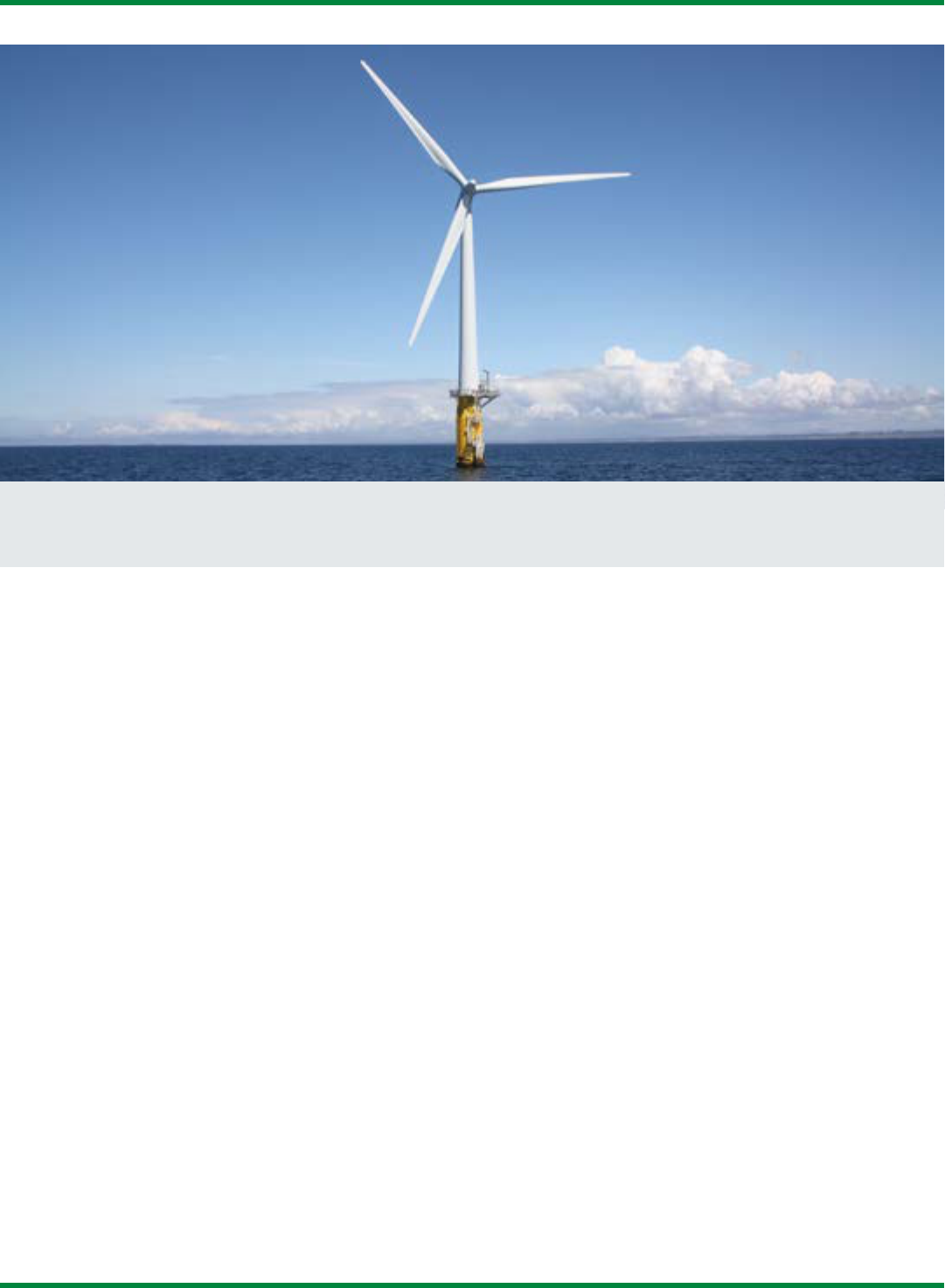
DOE’s Advanced Research Projects Agency-Energy (ARPA-E) Aerodynamic Turbines Lighter and Aoat with Nautical Technologies and
Integrated Servo-control program funded a variety projects to enable the next generation of efcient and cost-optimized oating
turbine designs.
Photo by Senu Sirnivas, NREL 27582
DOE Ofce of Clean Energy Demonstrations (OCED)—
Established in 2021 as part of the Bipartisan Infrastructure Law to
accelerate clean energy technologies from the lab to the market,
OCED delivers clean energy demonstration projects at scale in
partnership with the private sector to accelerate deployment,
market adoption, and the equitable transition to a decarbonized
energy system.
energy.gov/oced/ofce-clean-energy-demonstrations
DOE Advanced Research Projects Agency-Energy
(ARPA-E)—ARPA-E funds short-term, technology-focused,
applied R&D aimed at creating real-world solutions to important
problems in energy creation, distribution, and use. The agency’s
focus is advancing high-impact energy technologies that are
too early for private-sector investment but have the potential to
radically improve U.S. economic security, national security, and
environmental well-being.
arpa-e.energy.gov/about/apply-for-funding
Small Business Innovation Research (SBIR) program—The
Small Business Administration’s SBIR program encourages U.S.
small businesses to engage in federal R&D that has potential for
commercialization. Its mission is to support scientic excellence
and technological innovation through the investment of federal
research funds in critical American priorities to build a strong
national economy. Eleven federal agencies, including DOE,
participate in the program, soliciting grant proposals from small
businesses and making awards on a competitive basis.
sbir.gov
Technology Deployment Grants
DOE Ofce of Indian Energy—The Ofce of Indian Energy
provides nancial assistance, including grants and technical
assistance, to federally recognized tribal governments and
Alaska Native corporations to develop and deploy renewable
energy projects on tribal lands. In addition, the Ofce of Indian
Energy’s Energy Development Assistance Tool provides
information for tribes about federal grant, loan, and technical
assistance programs available from more than 10 federal
agencies to support energy development and deployment in
Indian Country and Alaska Native villages.
energy.gov/indianenergy/funding
DOE Ofce of Technology Transitions Technology
Commercialization Fund (TCF)—The TCF leverages the R&D
funding in DOE’s applied energy programs to advance energy
technologies with the potential for high impact. It uses 0.9% of
the funding for DOE’s applied energy research, development,
demonstration, and commercial application budget for each
scal year from the Ofce of Electricity, EERE, Ofce of Fossil
Energy, and Ofce of Nuclear Energy. These funds are matched
with funds from private partners to promote promising energy
technologies with the goal of increasing the commercialization
and economic impact of energy technologies developed at
DOE’s national labs.
energy.gov/technologytransitions/
technology-commercialization-fund
5
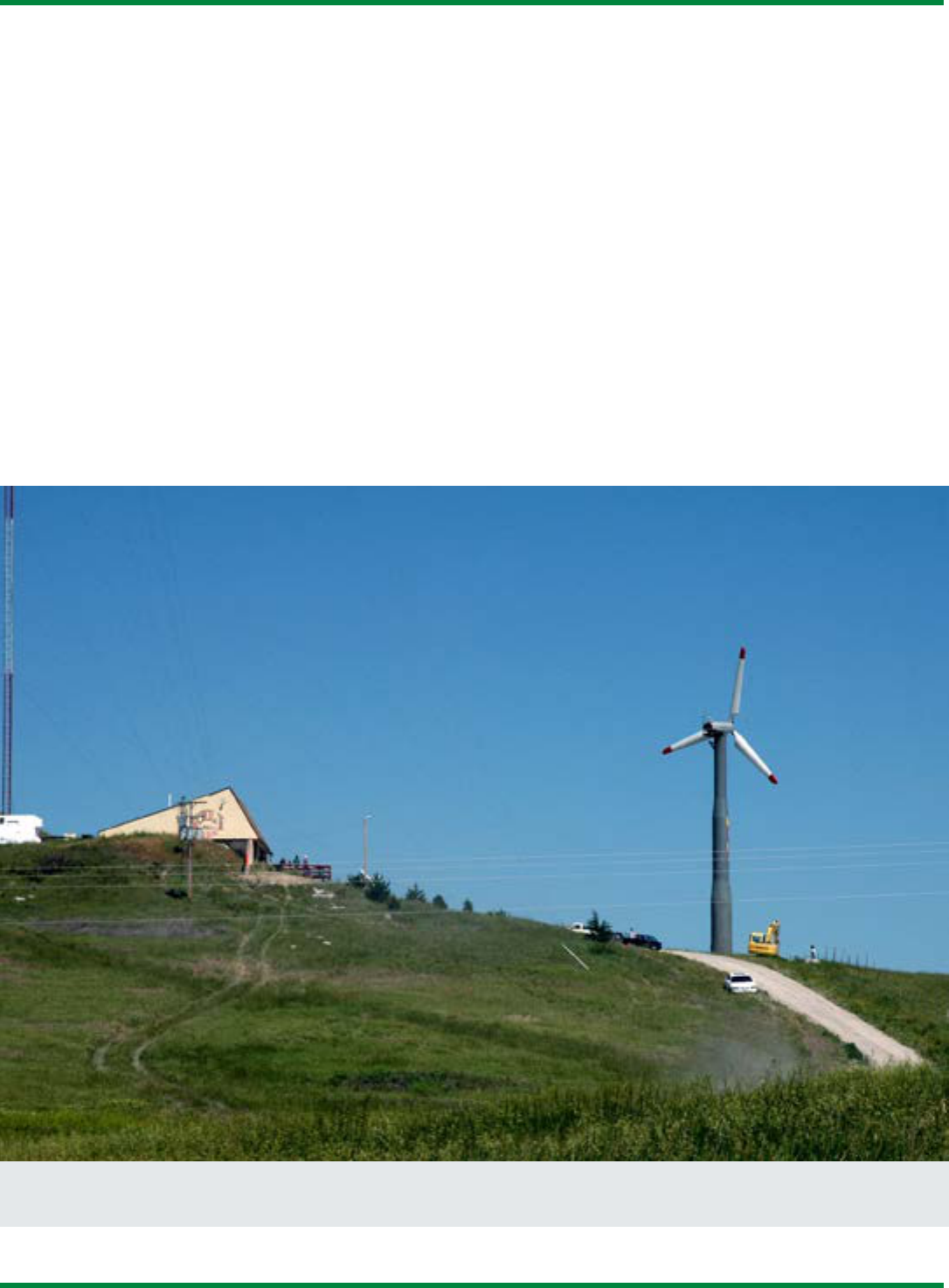
Rural Energy for America Program (REAP) Renewable
Energy Systems & Energy Efciency Improvement Loans
& Grants—In addition to loan guarantees, REAP provides
grant funding to agricultural producers and rural small
businesses to install renewable energy systems or make energy
efciency improvements. These renewable energy system
grants, which range between $2,500 and $250,000, can be used
to fund up to 25% of total eligible project costs and can be
combined with loan guarantee funding to fund up to 75% of
total eligible project costs.
rd.usda.gov/programs-services/energy-programs/rural-
energy-america-program-renewable-energy-systems-energy-
efciency-improvement-guaranteed-loans
Small Business Technology Transfer (STTR) program—
The Small Business Administration’s STTR program funds
collaborative efforts between small businesses and research
institutions with the goal of transferring technologies and
products from the laboratory to the marketplace. STTR’s focus
is on bridging the gap between the performance of basic science
and the commercialization of resulting innovations. Five federal
agencies, including DOE, participate in the program, soliciting
grant proposals from small businesses and making awards on a
competitive basis.
sbir.gov
State Energy Competitive Financial Assistance Program—
DOE’s EERE offers competitive grants through its State Energy
Program. Designed to meet DOE’s nationally focused energy
initiatives, the funding provides states and territories with
opportunities to develop public and private partnerships to deploy
energy efciency and renewable energy technologies and programs
with high potential for regional and local economic impact.
energy.gov/eere/wipo/state-energy-program-competitive-
nancial-assistance-program
6
The Lakota Nation installed a 65-kW Nordtank turbine that annually supplies 120 MWh of power to KILI, the Pine Ridge Reservation
radio station known as the voice of the Lakota Nation in South Dakota.
Photo by Bob Gough, NREL 16258
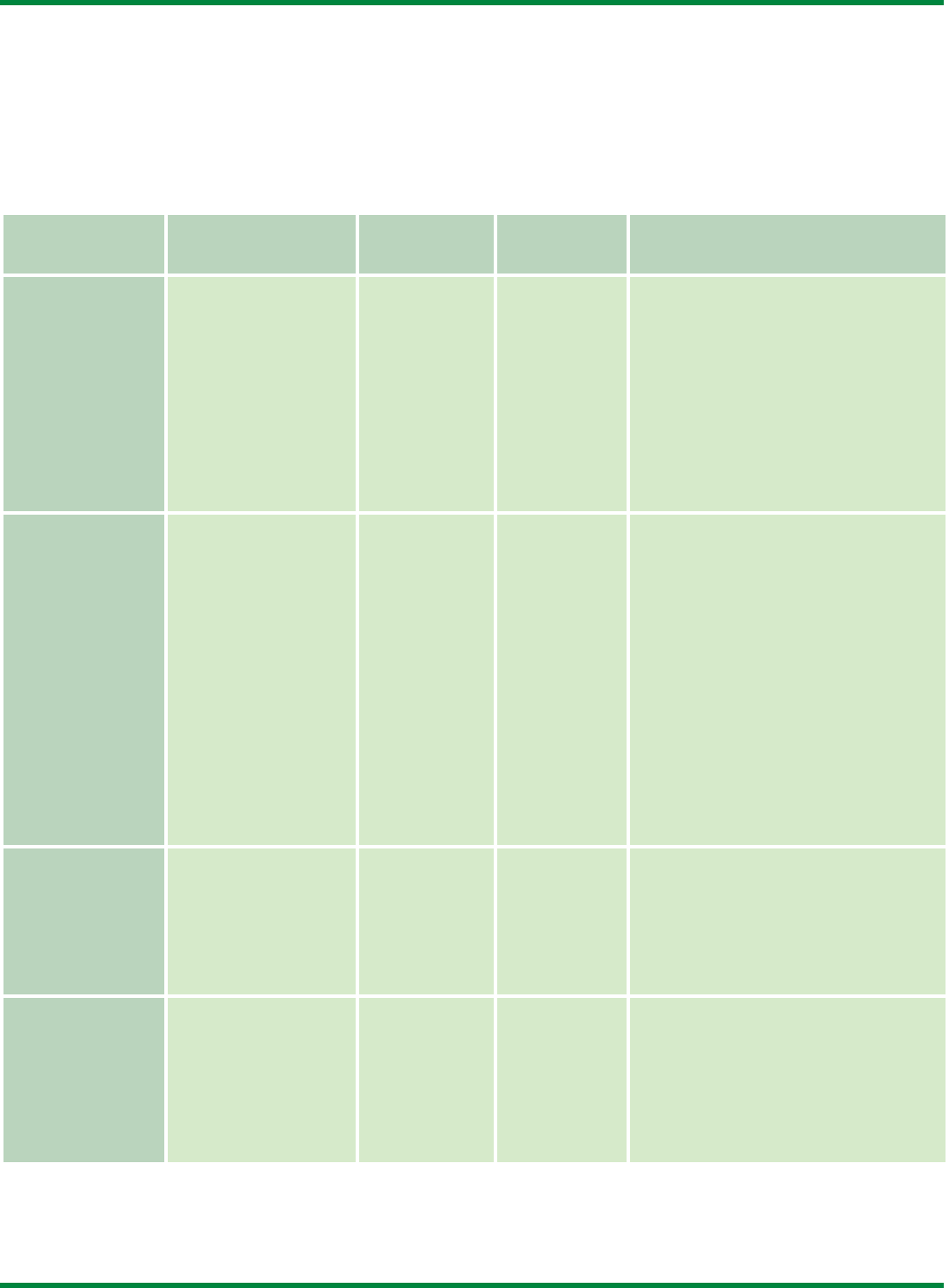
Partnership Opportunities with DOE National Laboratories
In addition to offering a wide range of nancial incentives
and resources designed to spur wind energy technology
development and deployment, the federal government actively
seeks opportunities to collaborate with industry, government
agencies, academia, small businesses, international organizations,
and nonprots to advance the development and deployment
of wind energy. This collaboration is possible through DOE’s
national laboratories—facilities where partners can access
technical expertise and highly specialized commercialization and
deployment capabilities.
7
Agreement Type Denition Cost
Estimated
Timeline*
Benets
Cooperative
Collaboration between Lab and One month • Leverage and optimize resources
Research and
Development
Agreement
(CRADA)
a lab and one or more
partners outside the
federal government
(usually from industry,
nonprot organiza-
tions, or academia,
participant
may share
costs or
participant
pays 100%
funds-in.
• Share technical expertise in a protected
environment
• Option to obtain license to the lab
CRADA- generated intellectual property
(IP) on agreed-upon terms and conditions
domestic or foreign) to
• Five-year data protection
collaborate and share
• Each partner may take title to its own
the results of a jointly
CRADA-generated IP
conducted R&D
project.
Agreement for
ACT is an agreement Varies, Two to four • Leverage and optimize existing
Commercializing
type allowed by DOE depending on months to capabilities at lab, freedom to negotiate
Technology (ACT)
for its laboratory
contractors to use
third-party terms and
conditions for work
circumstance.
Participant
pays 100% for
laboratory
establish,
depending
on U.S. or
foreign
as lab, releasing DOE from obligation
• Option to work at the speed and style of
industry partners: operating more like a
business
performed with or for
that third party.
DOE IP provisions are
required. ACT permits
a more exible cost
structure to enable the
laboratory contractor
to cover certain costs,
such as insurance,
contractor’s
cost of work.
Example:
lab and
participant
may share
costs or
participant
pays 100%
ownership
and length of
terms
negotiations
(about the
same as
other
agreement
types)
• Terms exibility provides room to
modularize each aspect of the agreement
and to explore more thoroughly the risks
(nancial, performance, funding,
resources/skills)
• Allows lab to engage in more relevant,
impactful work, such as accepting funds
from foundations
associated with funds-in.
project risks.
Strategic
Labs conduct work for Participant One month • Access to unique facilities, services,
Partnership
Project
non-DOE entities such
as industry, small
businesses, or other
pays full cost
of the lab’s
effort.
and/or technical expertise
• Flexible terms for IP and licensing rights
federal agencies and
may utilize DOE
facilities.
User Facility
Users may access User pays Two weeks • Generated data treated as proprietary (if
Agreement
facilities, specialized approved user proprietary user facility agreement)
equipment,
instrumentation,
personnel, etc., to
rate or each
party covers
its own cost.
• Access to unique facilities and equipment
to validate or improve user technology
conduct proprietary or
nonproprietary
research.
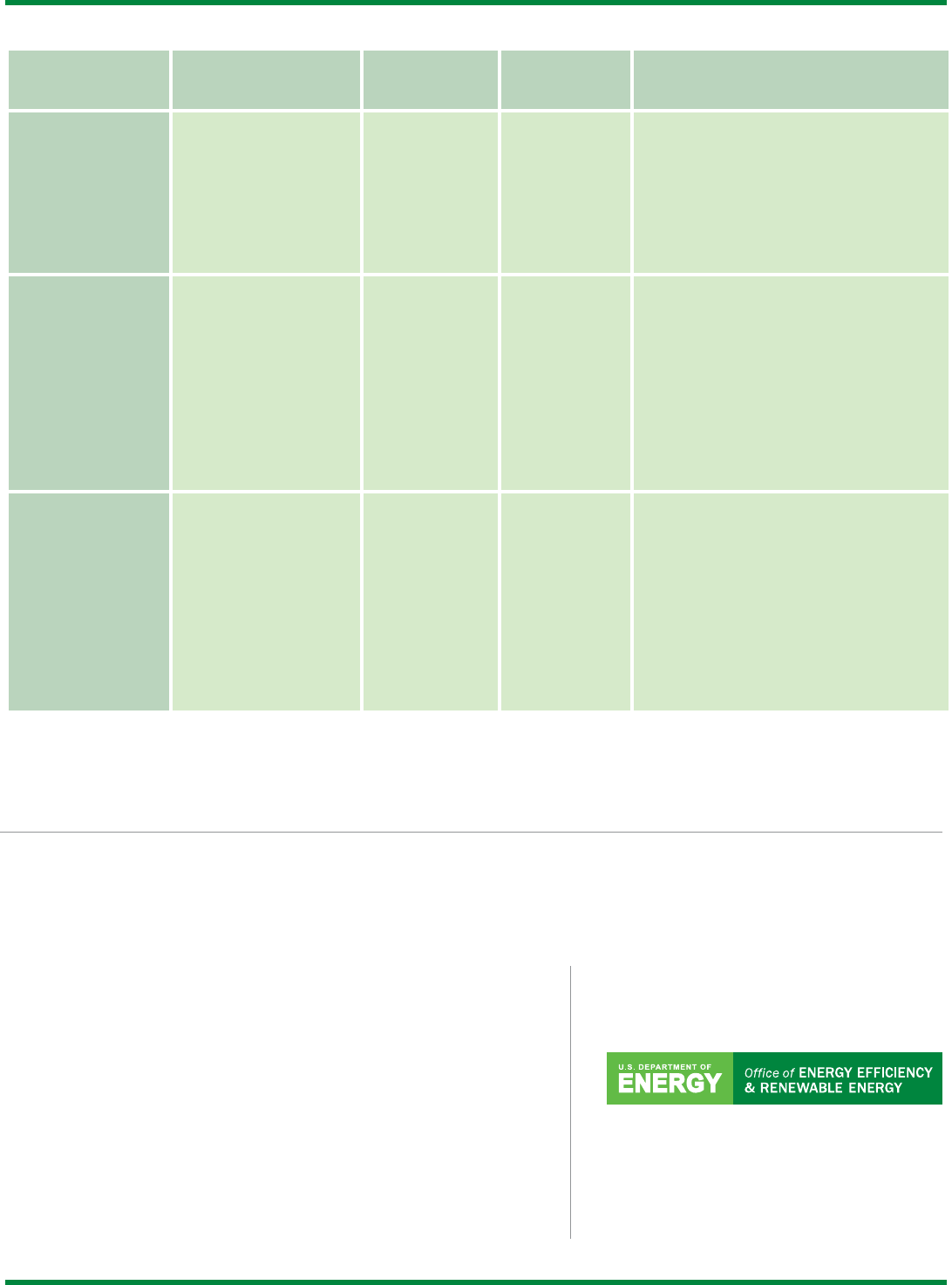
Agreement Type Denition Cost
Estimated
Timeline*
Benets
Technical Service
Agreement
Lab staff provide short-
term technical
assistance to
organizations with
technical problems
requiring expertise that
is not available
commercially.
Participant
pays full cost
of the lab’s
effort.
Five to 10
business
days
• Access to expertise of lab scientists and
engineers
Licenses
Companies acquire IP
rights (such as
patents, copyrights,
and trademarks) to
commercialize
technology developed
by the lab.
Payment (in
the form of
issue fees,
royalties on
sales, equity
in company,
etc.) is
nonrefundable
and provided
by the
licensee.
One month or
more
depending on
the license
• Leverage cutting-edge inventions to drive
technology commercialization
• Licenses may be nonexclusive or
exclusive
• Opportunity available to small and large
businesses
University
Partnerships
In partnering with
universities and
colleges, national
laboratories combine
scientic knowledge
and state-of-the-art
facilities to research
and deploy renewable
energy and energy
efciency technologies.
Varies,
depending on
circumstance.
One month or
more
• Enhance research collaboration
• Foster the exchange of ideas
• Attract rising stars in scientic and
engineering disciplines
• Create pathways for graduate and
undergraduate students—as well as
postdoctoral researchers
• Explore new ways to engage with a range
of educational institutions
Note that this table does not capture all partnering mechanisms, and there might be differences among each of the national laboratories.
Please contact the potential laboratory partner being considered for additional information.
*The exact timeline for completing agreements is determined on a case-by-case basis (the estimated timelines above reect time to complete
agreements after the statement of work and funding have been agreed upon). Agreements with non-U.S. entities take longer.
Working Together To Move the Wind Industry Forward
For additional information on the unique partnering opportunities available at each national laboratory, visit their
partnering, technology transfer, and commercialization web pages.
Argonne National Laboratory National Renewable Energy
This fact sheet focuses on federal government
anl.gov/work-with-us Laboratory
support for wind energy. For information on state-
level policies and incentives, see .
Idaho National Laboratory
nrel.gov/wind/work-with-us.html
dsireusa.org
inl.gov/td Oak Ridge National Laboratory
Lawrence Berkeley National
ornl.gov/partnerships
Laboratory Pacic Northwest National
ipo.lbl.gov Laboratory
Lawrence Livermore National
pnnl.gov/industry-partnerships
For more information, visit:
Laboratory Sandia National Laboratories
energy.gov/eere/wind
llnl.gov/doing-business sandia.gov/working-with-sandia
DOE/GO-102022-5832 • April 2023
Los Alamos National Laboratory
lanl.gov/collaboration
8
